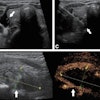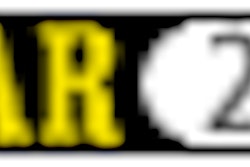
CLEVELAND - Healthcare mergers and acquisitions over the past two decades have resulted in patient services being provided at different institutions. One of the challenges for administrators of these healthcare groups is providing images, as well as the results of both current and prior exams, to radiologists working in disparate locations.
Dr. Roberta Locko, with Generations Plus/Northern Manhattan Health Network, a part of New York City’s Health and Hospital Corporation (HHC), has implemented a dynamic worklist management technology to meet the information distribution needs of her organization. Locko presented the results of her team’s work to attendees of the Reading Room scientific sessions at the Symposium for Computer Applications in Radiology on Saturday.
Generations Plus is comprised of Harlem Hospital, Lincoln Medical and Mental Health Center, and the Metropolitan Hospital Center. These institutions have 1,465 beds combined, see approximately 4,260 ambulatory patients daily, and perform nearly 300,000 radiological exams annually.
"Difficulties in staffing, chronic shortages in critical subspecialties, and growing demands for imaging procedures forced us to reconsider our fundamental workflow processes. In particular, how we were distributing prior and current reports and images between institutions to our radiologists," said Locko.
Locko and her team set out to create a distributed query system that would permit management of enterprise worklists based on modality, body part, exam status, and other criteria across multiple standalone PACS. In addition to providing information from the various facilities to radiologists, the group also sought to distribute the radiological workload across the enterprise.
The team developed a supra-PACS database that utilizes SQL queries to dynamically update worklists by adding new, and removing listed, examinations on the basis of exam status changes. The worklists are system-defined and are also fully customizable for user-specific or role-specific needs.
"The worklists consist of patient folders with new exams, old exams, and related information available within the PACS and from the HIS or RIS, including reports and other documents," said Locko.
The greatest challenge the team faced in the development of the dynamic worklist was establishing a unique a patient identifier. Neither the HHC nor the Generations Plus group has yet implemented a unique patient identifier or a master patient index across all its facilities.
Although each of the institutions has a similar RIS, accession numbers are not guaranteed to be unique across the facilities. The group has temporarily appended a two-character alpha code to the end of the accession number for each patient. Although this does guarantee the uniqueness of that accession number for that patient at that facility on that day, it does make querying for that patient’s prior exams from other institutions difficult.
Locko noted that plans to implement a master patient index at Generations Plus, and its parent organization, HHC, are underway. Once this patient identifier system is in place, the team is planning on distributing the dynamic worklist management technology to the 11 acute care hospitals, 6 diagnostic and treatment centers, 4 long-term care facilities, 7 Communicare centers, 46 child health clinics, 6 oral health clinics, and the home health care agency in the HHC network.
By Jonathan S. BatchelorAuntMinnie.com staff writer
May 4, 2002
Related Reading
From planning to PACS: A community hospital's journey, April 11, 2002
Radiology workstations need integration, automation, March 15, 2002
PACS-RIS integration moves forward at RSNA, December 7, 2001
Integration, security star in PACS exhibits, November 25, 2001
Copyright © 2002 AuntMinnie.com



















